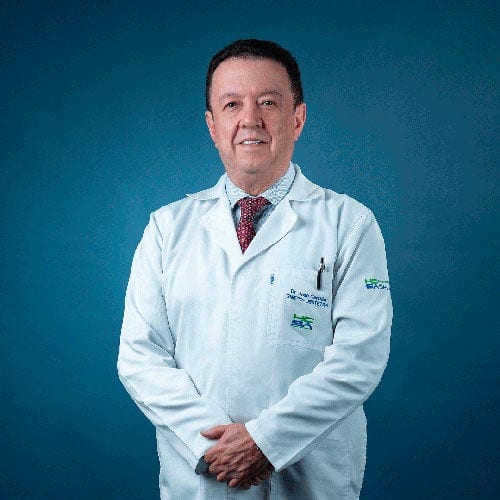
The organism was first observed on a blood smear in 1909 by Alberto Leonardo Barton Thompson, an Argentian-born Peruvian researcher who gave his name to the bacterial genus. The disease remains endemic in some rural areas of Peru an outbreak occurred as recently as 1998, with a mortality rate of less than 1%, compared with 40% to 90% in the era before effective antibiotic treatment. Salmonella superinfection complicated many of the cases historically, and superinfection increases lethality. Subsequent investigations demonstrated that the disease is caused by Bartonella bacilliformis gram-negative bacteria, which are transmitted by sandflies of the genus Lutzomyia. The geographic distribution of Carrión's disease is limited to Peru, Ecuador, and Colombia, and it is encountered primarily in Andean valleys at an altitude between 5 meters. A Peruvian law later declared him officially a “National Hero,” and Oroya fever became known as “Carrión's disease.” Chavez, as accessories to murder, but the legal case quickly fell apart owing to overwhelming public sentiment. There was a brief attempt to prosecute his friends, including Dr. He is buried in a mausoleum on the premises of the National Hospital Dos de Mayo in Lima. The day before his death, a blood transfusion was authorized by a hospital committee (transfusions were considered extremely dangerous in the era, 15 years before Karl Landsteiner discovered blood types, and were only used in desperate cases), but Carrión died before any blood could be administered. Carrión's condition deteriorated further, and he was admitted at the end of September to Maison de Santé (the French Hospital in Lima), where he was treated with iron salts, quinine, and oxygen.

From September 26 he was too weak to continue to take notes on his own, so his friends continued his research project even as they were also attending to him at the bedside. By September 22, he was very ill: jaundiced and pale, with dark-colored urine consistent with brisk hemolysis. On September 17, he developed some pain in his left ankle, which resolved the next day, but 2 days later he came down with cramps, fevers, chills, and headaches. Carrión then took detailed notes on the evolution of his condition.Īlthough he noticed some brief itching at the inoculation sites the day after the injection, Carrión experienced no further symptoms until 3 weeks later.
#DR CARRION SKIN#
Because Carrión had difficulty inoculating his own arms with the material from Paredes' skin lesion, several of his friends, including a young physician named Evaristo Chavez, took the lancet from him and made 4 inoculations, 2 in each of Carrión's arms. He used a lancet to scrape material from a bright red, active verruca located near the eyebrows of a 14-year-old boy at the hospital who had recovered from an illness and was about to be discharged (history records both the boy's name, Carmen Paredes, as well as the ward bed he was in, Numero 5). His supervisors adamantly refused, so on August 27, 1885, Carrión took matters into his own hands. Realizing that the key unanswered question about the disease was whether it was linked to Oroya fever (and perhaps wanting to achieve some notoriety at the outset of his career to help overcome his lack of money or political connections), he begged his supervisors at the Hospital Dos de Mayo in Lima to inoculate him with tissue from a skin lesion of an affected patient.

Carrión was required to prepare a thesis to graduate from medical school, and he decided to study verruga peruana, which he had first encountered as a boy in Cerro de Pasco.


 0 kommentar(er)
0 kommentar(er)
